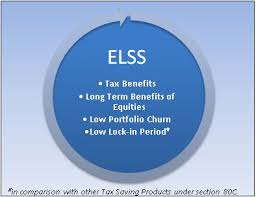ELSS – The Past investment returns shows that the ELSS funds offers better tax treatment on returns as compared to other tax saving instruments u/s 80C and having lower lock in period.
This is the taxation time and investors are looking at investment opportunities under section 80C (which have been increased to Rs 1,50,000) to save on their taxes.
There are several options the Income Tax Act provides under 80 © section, prominent among them include the
[button color=”red” size=”small” ]Public Provident Fund (PPF),[/button]
[button color=”red” size=”small” ]Bank fixed deposits (FD)- 5 years,[/button]
[button color=”red” size=”small” ]National saving certificate (NSC)[/button]
[button color=”red” size=”small” ]LIC, ULIP Investment[/button] and
[button color=”green” size=”medium” ]Equity linked saving schemes (ELSS)[/button], which are also popularly known as tax saving mutual funds schemes.
Each of these investment option have their own distinct features, Investors must evaluate each one of them using multiple parameters before choosing their option.
| Parameters | PPF | Bank’s FD | NSC | ELSS |
| Tenure | 15 Yrs | 5 Yrs (Lockin) | 5 yrs | Lockin 3 Yrs |
| Returns | 8.7% | Interest Rate Varies Among Banks | 8.5% Compounded
Half Yearly |
Not Assured |
| Min. Investment | Rs 500 | Rs 100 | Rs 100 | Rs 500 |
| Max. Investment | Rs 1,50,000 | Rs 1,50,000 | No Limit | No Limit |
| Max Amount For
Tax Rebate u/s 80C |
Rs 1,50,000 | Rs 1,50,000 | Rs 1,50,000 | Rs 1,50,000 |
| Whether Income Received
Tax Free |
Yes | No | No | Yes |
TENURE of Investment :
ELSS is an absolute winner as it comes with a three year lock-in period. While NSC comes in two variants- five and ten years, bank fixed deposits make you invest for at least five years to make it eligible for tax benefit while the PPF makes investors have a 15 year outlook.
Though ELSS comes with a three year lockin period, there is no need to sell at the end of three years, investors can remain invested till they want and enjoy capital appreciation by investing in equities.
MINIMUM INVESTMENT: Individuals can invest in ELSS with a sum as low as Rs 500 with no compulsion to contribute in future.
TAX LIABILITY: Though all the Investment instruments offer tax incentives on the investments, but the Taxation liabilities are different on Maturity.
Interest earned on NSC and bank FDs is clubbed to the investor’s income and Taxed with prevailing rate of Income Tax Slabs thus effectively bringing down the post tax returns.
PPF Maturity is Tax Free in the hands of the investor.
ELSS have different approach for taxation. There are two options for investors. Dividends declared by these funds are tax free.
Further, since ELSS comes with a three year lock in and Security Transaction Tax is already deducted, capital gains are treated to be long term and are Tax Free.
RISK-RETURN: While PPF, bank fixed deposits and NSC offer assured returns, ELSS offer market linked returns. Rate of return payable on PPF is announced by Central Government from time to time and for 2014-2015 it is fixed at 8.7%. The interest paid is compounded annually.
NSC, however compounds interest half yearly and pays 8.5% and 8.8% for five and ten years term, respectively.
Bank fixed deposits offer around 8.5% to 9% returns, compounded half yearly. Since ELSS invests in equities, the returns are uncertain and investors must be prepared to stomach volatility.
